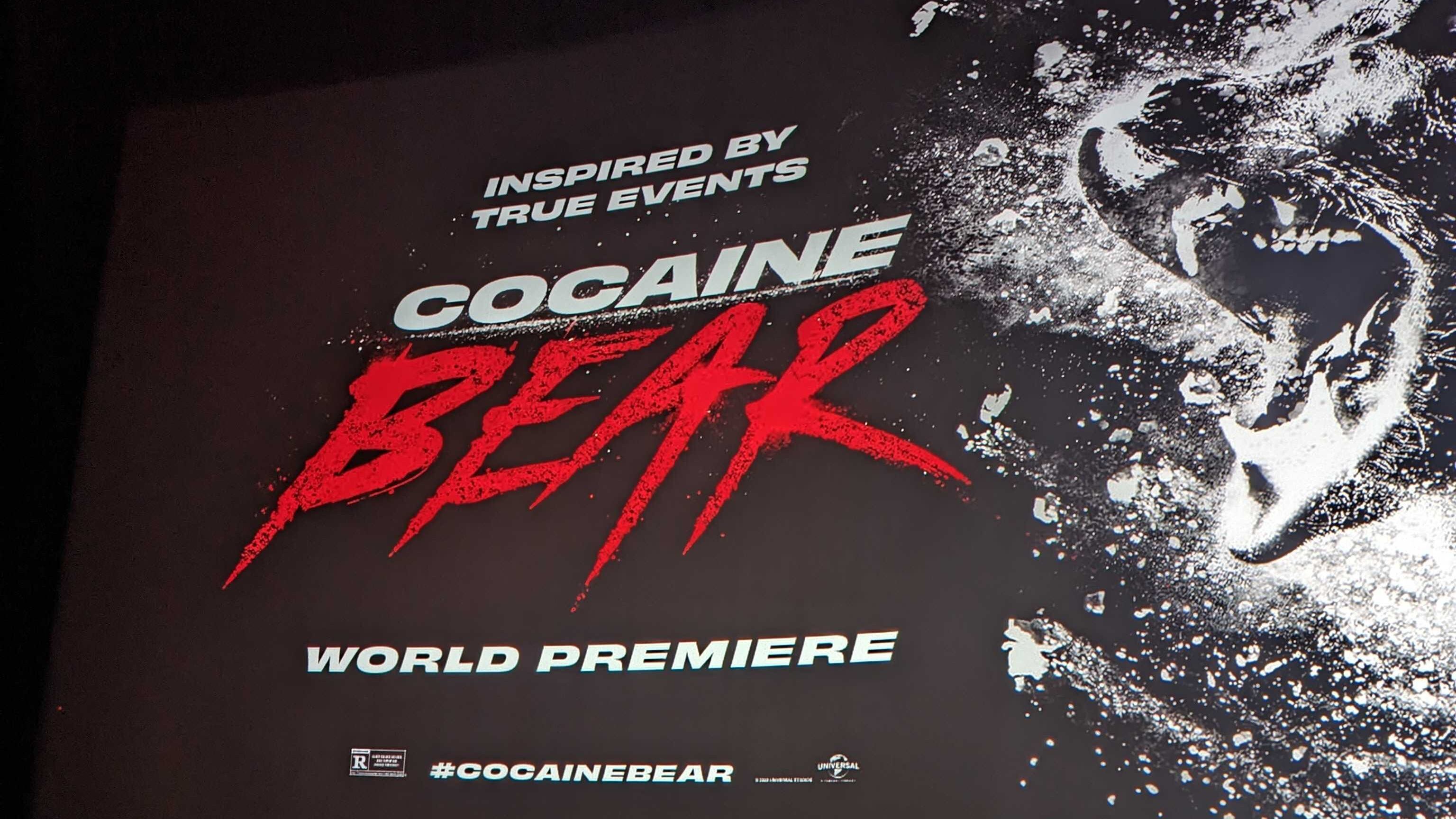In December 1985, a black bear was found dead in a Georgia forest after ingesting a large amount of cocaine. A police investigation later concluded that the cocaine had been dropped in the forest by former police officer and drug smuggler Andrew Thornton, who had died a few months earlier in a parachuting incident.
“Cocaine Bear,” written by Jimmy Warden and directed by Elizabeth Banks, reimagines this novel incident in a reality where that bear hadn’t met such an immediate end — and instead indulged in a drug-induced murder spree. Predictably, the first trailer depicting this reality quickly went viral upon its November 30 release.
I got the opportunity to attend the film’s global premiere with USC’s Public Relations Student Society of America (PRSSA) on February 21, which attracted veteran actors like Samara Weaving (“Mayhem,” “Ready Or Not”) and Hunter Doohan (“Wednesday”) and TikTok stars such as Renata Valliulina (@riwww on TikTok) and Brooklynne Webb (@xobrooklynne on TikTok).
Ahead of the screening, Banks gave a short speech about the journey to this point in her career.
“I’ve been a part of franchises like ‘The Hunger Games’ and ‘The Lego Movie,’ I launched a franchise in ‘Pitch Perfect,’ I relaunched the game show ‘Press Your Luck,’ I got Emmy-nominated for ‘30 Rock,’ and I’ve directed a couple of films on the way,” Banks said. “But I am fully convinced that everything has brought me to this moment in my career: the pinnacle, the rich and deeply cerebral ‘Cocaine Bear.’”
She then went on to thank the extensive amount of crew members around the world involved in the project and saved the cast members, which included Keri Russell, O’Shea Jackson Jr., Alden Ehrenreich, Christian Convery, Brooklynn Prince, Ayoola Smart and the late Ray Liotta, for last.
Between the gruesome death sequences and the near-constant swearing in this film, it’s safe to say that it earns its R rating. Limbs and entrails are nearly as prevalent in this film as the white powder that fuels it and twice as excessive. The cursing only slightly trails in terms of excess, which is a natural consequence of having an ensemble rife with drug dealers and adolescents.
The narrative doesn’t linger on any character or storyline long enough for the audience to form a genuine attachment to any of them. This would be a problem if the characters were developed beyond their stock descriptions and cliched dynamics: cynic and romantic, innocent and sheltered.
For the actors’ part, the performances weren’t particularly noteworthy or nuanced to elevate the characters beyond their literal functions; I rooted for the characters because I was supposed to, not because I had a true belief that any of them — save for the protective mother and the children — deserved to win. In any other film, this would have been an irreconcilable flaw and a surefire catalyst for a box office flop; in “Cocaine Bear,” it sets the perfect foundation for the true star of the film, the titular bear, to shine.
The most memorable and comedic scenes in the film are inherently horrific. The acts, while extremely graphic and brutal for brutality’s sake, are too far too juvenile to leave any lasting impression beyond a chuckle or a wince and they primarily victimize caricatures the audience is not primed to genuinely care about — leading to an experience that more closely resembles a gladiator fight than a senseless massacre.
Put plainly, this movie rests its full weight on the spectacle and novelty of a blasted, barbarous black bear. That’s it. Coming with any expectations beyond that will only leave you feeling unfulfilled as the writhing CGI creature on the comedown from its powder-fueled high.
“Cocaine Bear” is now playing nationwide exclusively in theaters.
